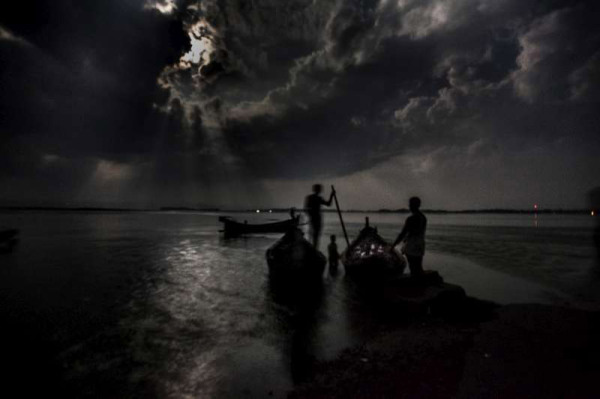More people are risking their lives to cross the Indian Ocean on smuggler’s boats despite the great risks involved, including the prospect of “horrific violence,” the United Nations refugee agency on 5 December 2014 warned.
Speaking at a press briefing in Geneva, William Spindler, a spokesperson for the Office of the UN High Commissioner for Refugees (UNHCR), told reporters that an estimated 54,000 people had undertaken irregular maritime journeys in the Southeast Asian region of the Indian Ocean, including some 53,000 people leaving from the Bay of Bengal towards Thailand and Malaysia.
$1,600 to $2,400 per “Passenger”
According to UNHCR, in fact, an estimated total of 120,000 people are believed to have embarked on these clandestine journeys across the Bay of Bengal since the beginning of 2012, with payments ranging from $1,600 to $2,400 per passenger.
As a result of the frequency and cost of the journey, smugglers have managed to generate nearly $250 million in revenue in the last three years alone.
“The outflow from the Bay of Bengal tended to peak in October, when calmer waters followed the end of the rainy season,” Spindler explained. “Departures this October surged more than in previous years.”
Rohingya and Bangladeshis
The spokesperson added that some 21,000 Rohingya and Bangladeshis had set sail since then – a 37 per cent increase over the same period last year. About 10 per cent were believed to be women while approximately a third of arrivals interviewed by UNHCR in Thailand and Malaysia were minors under the age of 18.
Spindler suggested that the uptick in numbers were caused by current conditions in Myanmar where ethnic tensions and conflict could be driving Rohingya, an ethnic minority group, to leave the country.
Smugglers Holding Them Until Their Families Pay for Their Release
Meanwhile, he continued, the majority of people who made the crossings were initially charged very little by the smugglers who, upon arrival at their destination, would then hold them against their will until the families paid money for their release. In many cases, the migrants are held in dire conditions, suffering beatings, torture and rape.
Once the migrants are released, they still face potential detention from the local authorities, clandestine living within the host country, or even deportation to their country of origin.
“It is a very concerning situation,” Spindler said. (*Source: UN release).
Read also:
1 in 3 Victims of Human Trafficking Is a Child — Girls, Women Account for 70% of the Total
With Annual $36 Billion, Human Trafficking Ranks as World’s Third Most Profitable Crime
2.4 Million Victims of Human Trafficking At Any Given Time Across the Globe
Who Dares to Challenge a 32 Billion Dollars Business – Human Trafficking?
Millions of Urban Children at High Risk of Violence, Exploitation and Trafficking
Mr. Ban Has a Dream: That Big Business Will Fight Against Modern Slavery!
Small Farmers, Victims of Food Marketing Companies
Financial Trafficking in Millions of Citizens Is Not ‘Illicit’!
New Brand of Slavery Surfaces in America Racism, Just Another Atrocious Weapon of Fear and Hatred
Over 100 Million Children, In Hazardous Work
2014 Human Wrongs Watch










